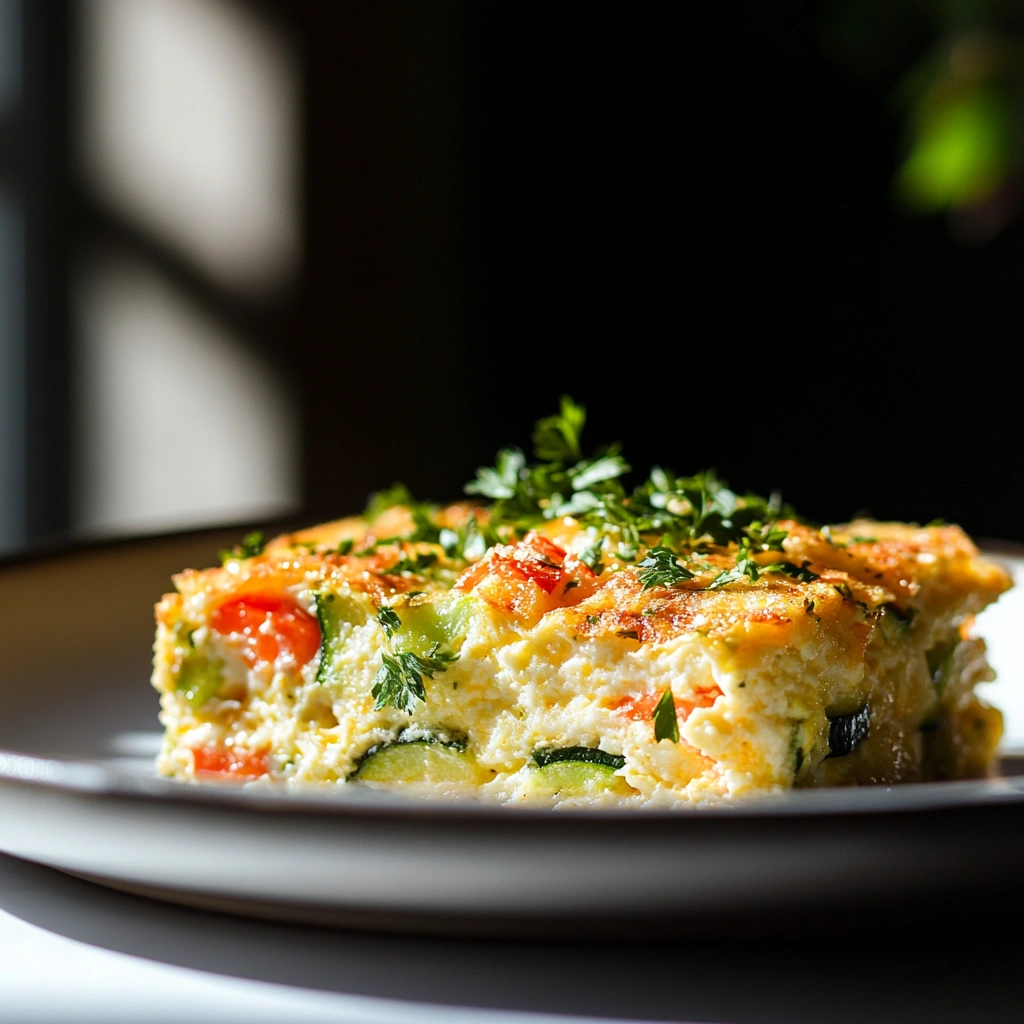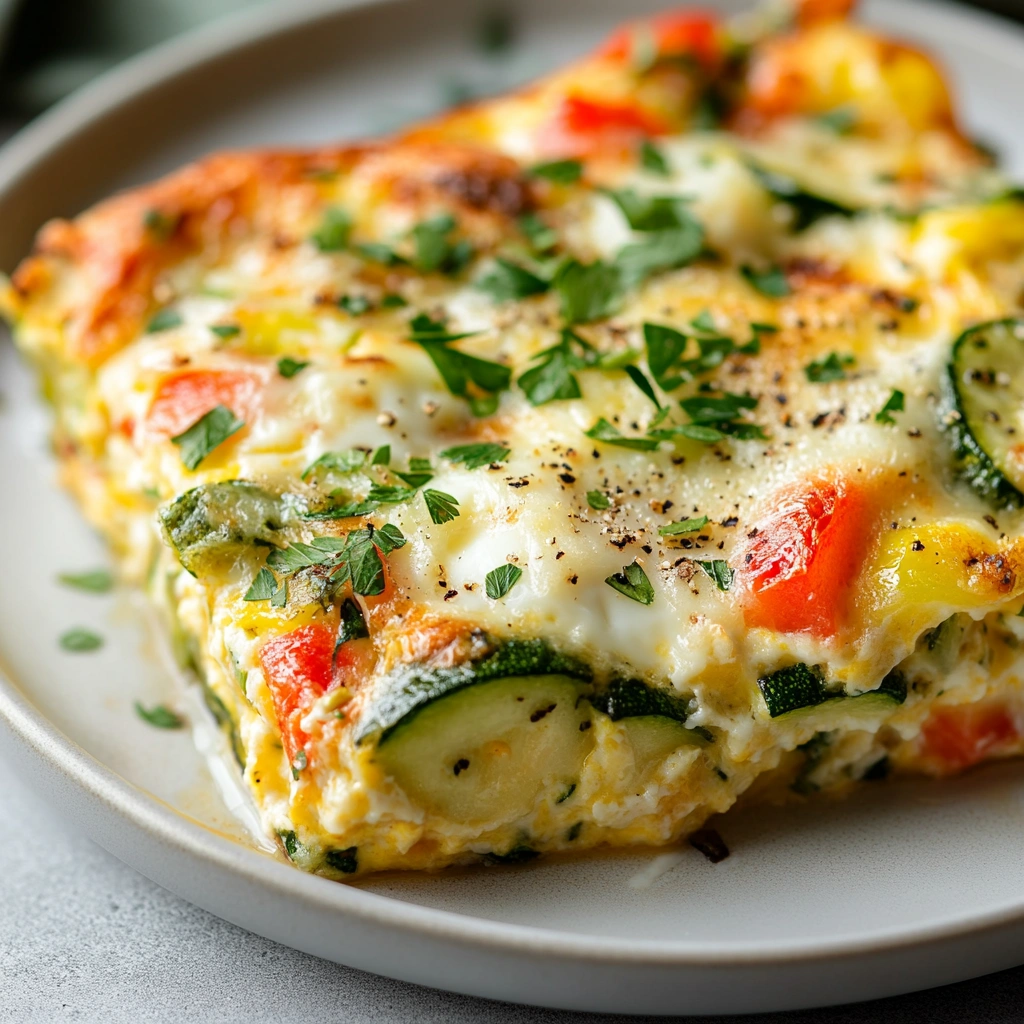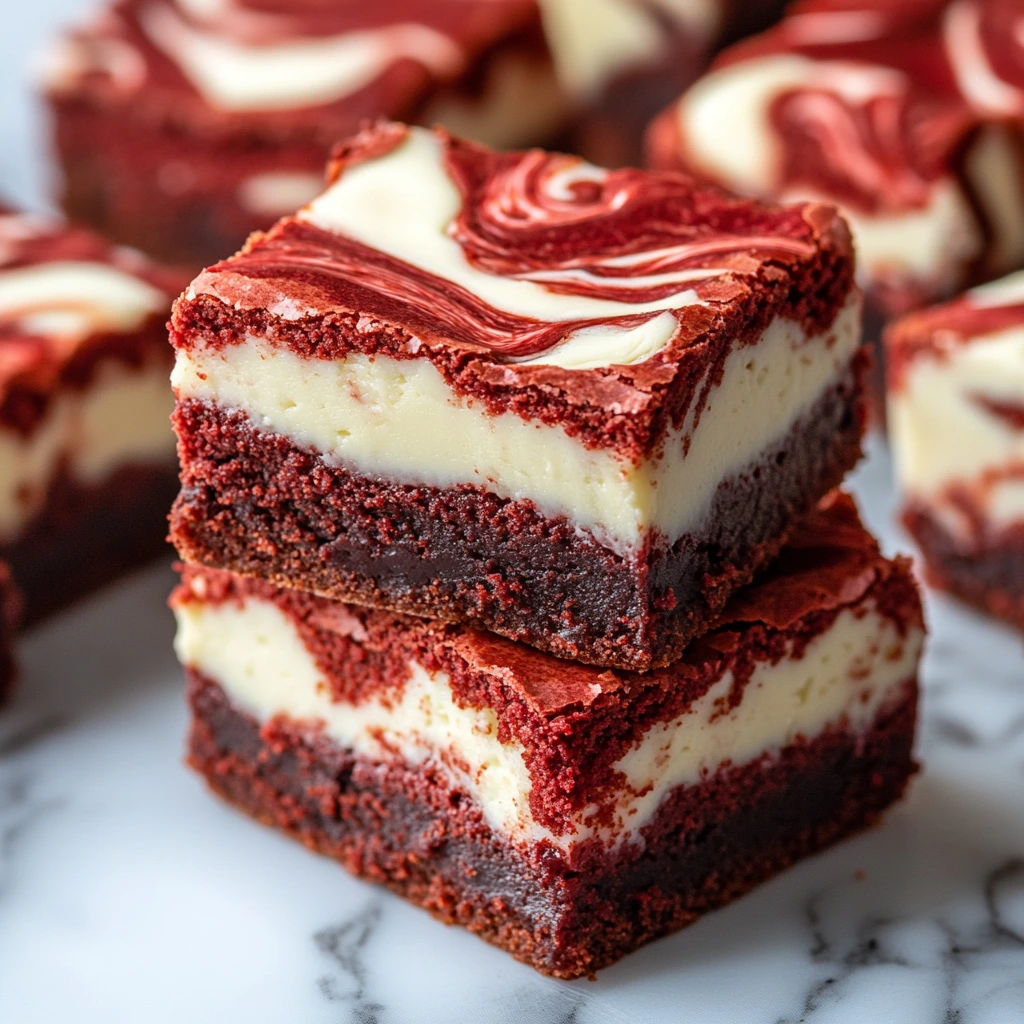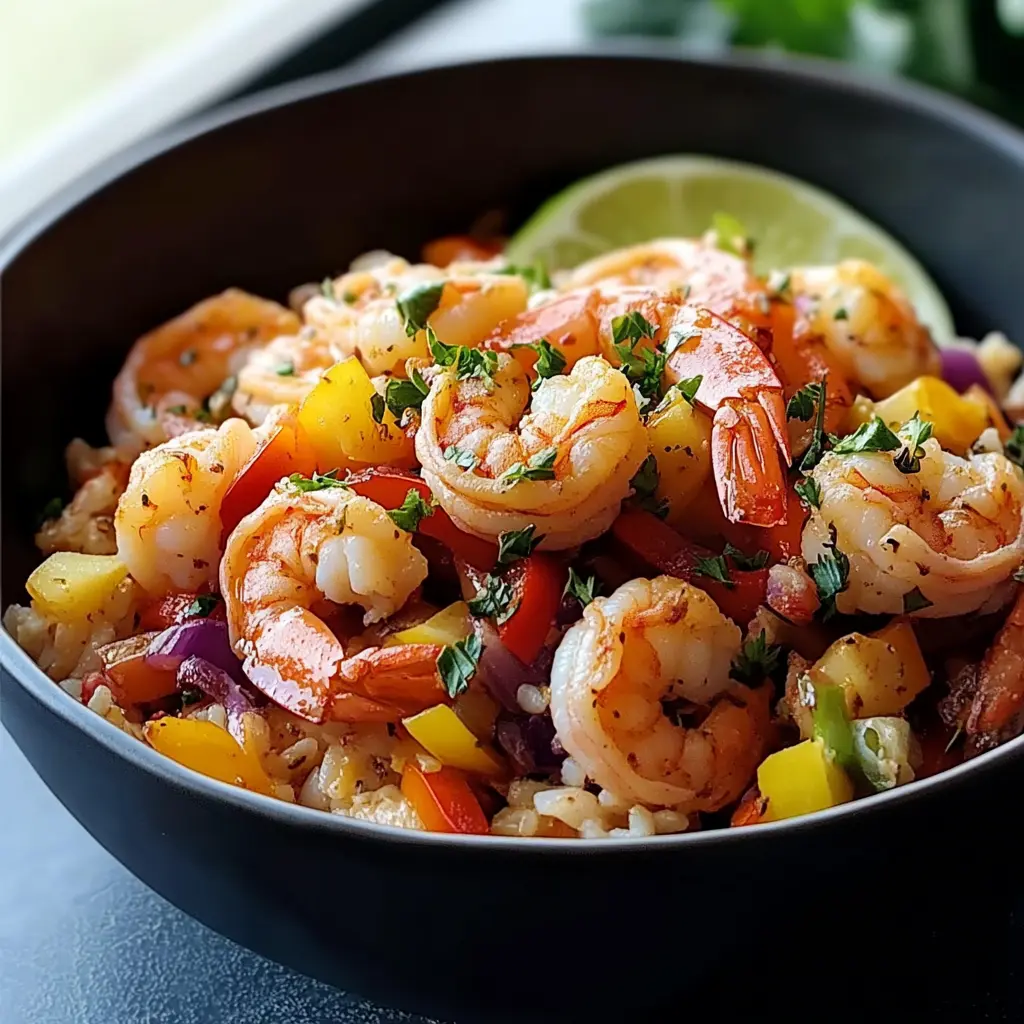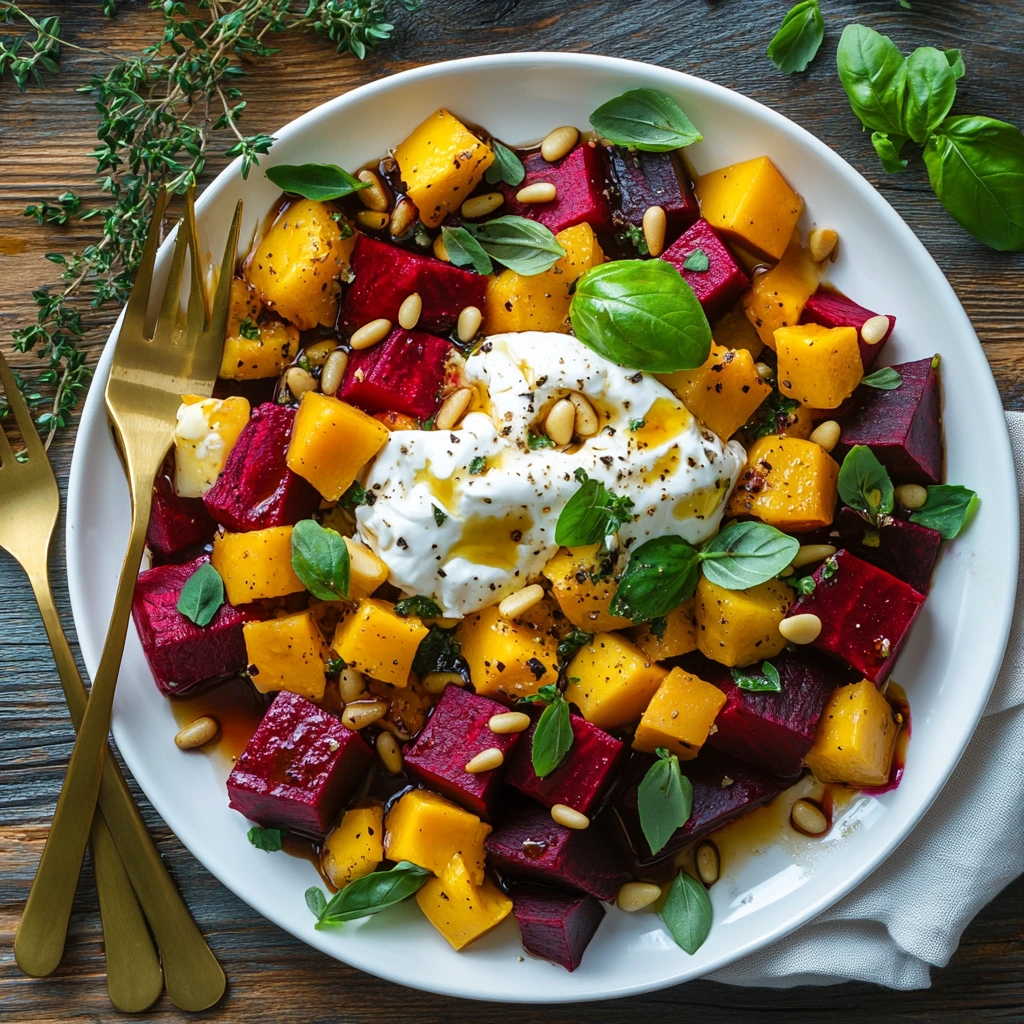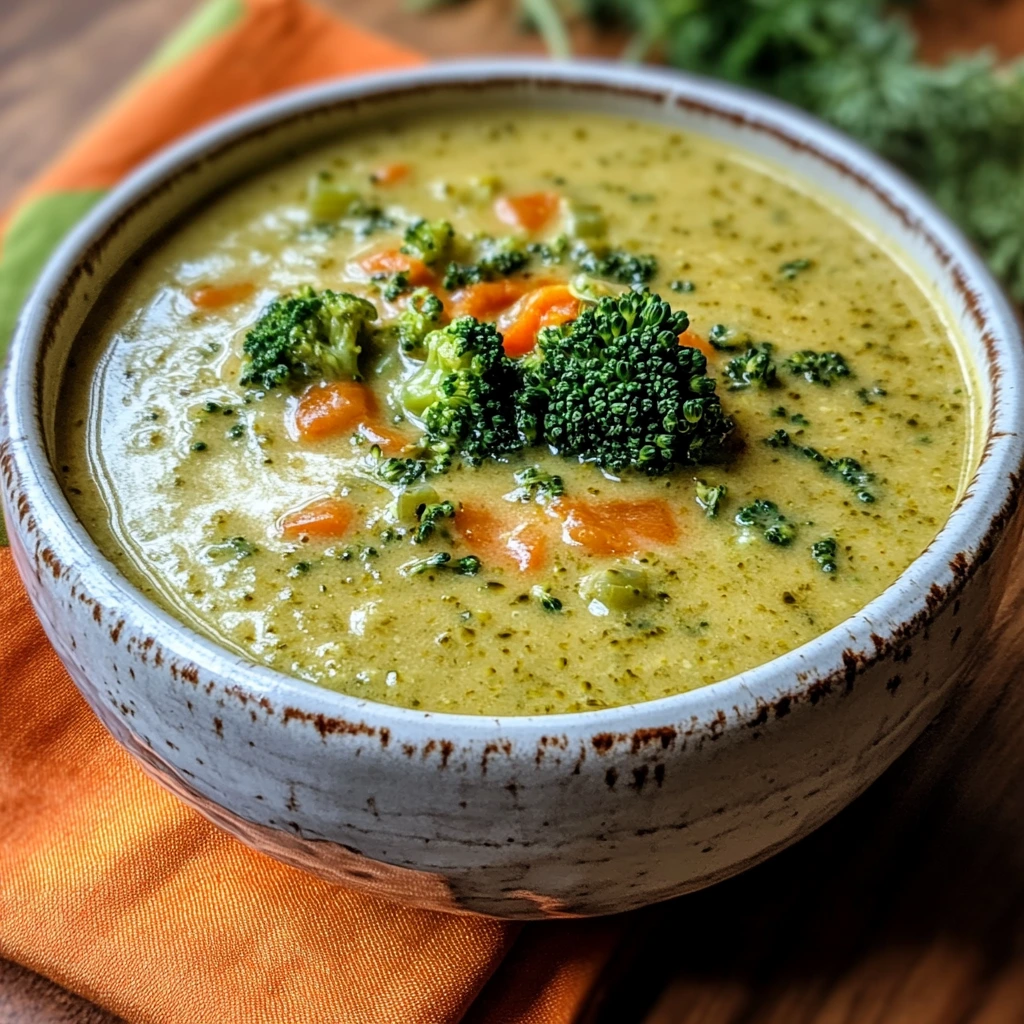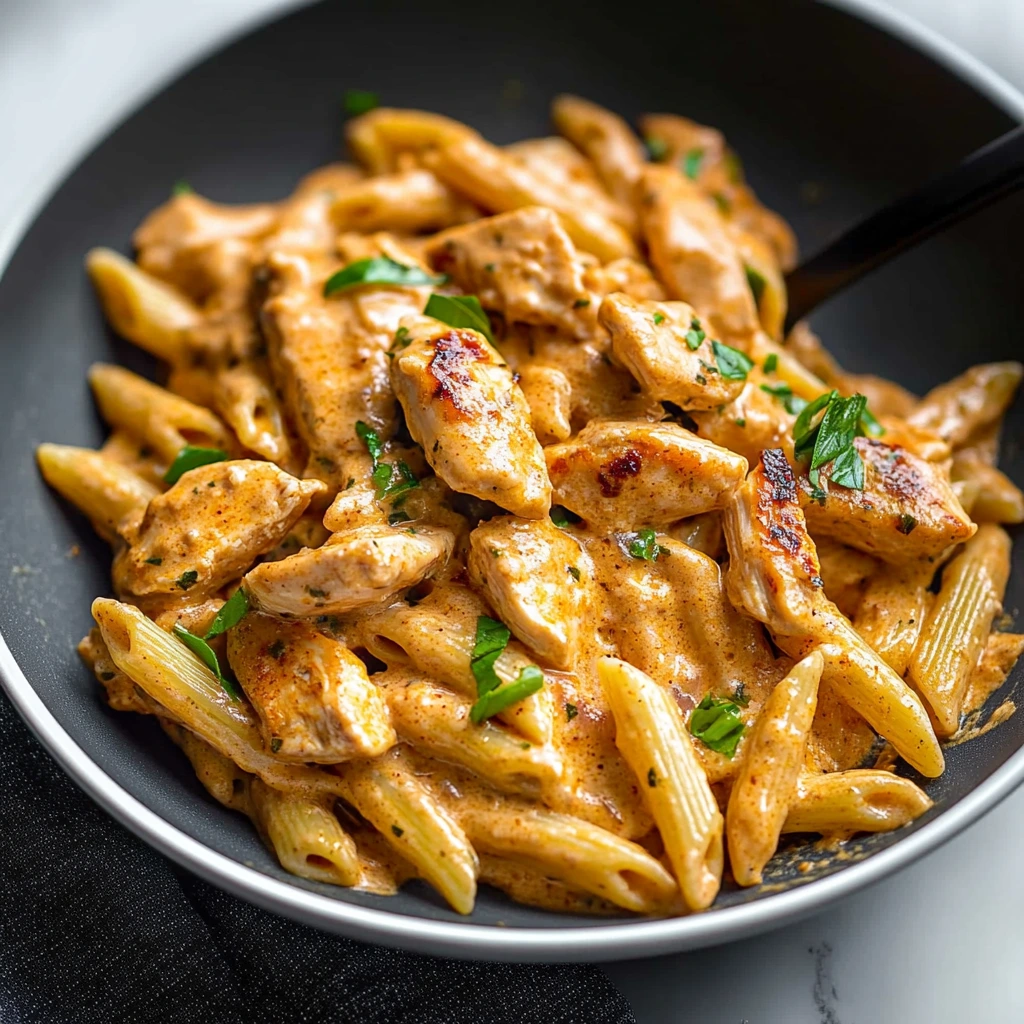A frittata is a delicious and versatile Italian egg dish that’s often compared to an omelet or a crustless quiche—but it’s so much more than that. Unlike a French-style omelet that’s folded over fillings and cooked quickly, a frittata is slower-cooked, finished in the oven, and designed to be sliced and shared. The name “frittata” comes from the Italian word friggere, meaning “to fry,” but today’s versions are more often baked or broiled for a fluffy, golden finish.
Frittatas are an ideal way to use up leftovers or highlight fresh, seasonal ingredients. You can add just about anything: sautéed vegetables, bits of cooked meat, cheese, and herbs. The base is simple—beaten eggs combined with a splash of dairy (milk or cream)—but the real magic comes from what you mix in.
Best of all, frittatas are flexible when it comes to meals. They’re just as satisfying for breakfast as they are for lunch, brunch, or a light dinner. Serve them hot out of the oven, warm, or even chilled—the flavors hold up beautifully. Plus, they can be made ahead of time, stored in the fridge, and enjoyed throughout the week.
Whether you’re a seasoned cook or a kitchen beginner, a frittata is one of the easiest ways to make a hearty, wholesome meal with minimal effort and maximum flavor. This guide will walk you through a foolproof base recipe and show you how to customize it with your favorite ingredients.
Why You’ll Love This Frittata Recipe
This easy frittata recipe is a true kitchen lifesaver. Whether you’re dealing with leftover veggies, a nearly empty cheese drawer, or a couple of eggs nearing their expiration date, this dish turns odds and ends into a satisfying meal. It’s quick, requires just one pan, and doesn’t call for any fancy equipment or culinary skills.
You’ll love how adaptable it is—choose your favorite add-ins or stick with what’s on hand. You can go vegetarian, pack in the protein, or keep it light and low-carb. The flavors are endlessly customizable, and you can serve it hot, cold, or at room temperature.
It’s perfect for busy mornings, lazy weekend brunches, meal prepping, or even a weeknight dinner. Once you learn the basic technique, you’ll have a go-to recipe that’s as reliable as it is delicious. The simplicity, versatility, and satisfying result make this frittata a staple you’ll come back to again and again.
Essential Ingredients for a Basic Frittata
The beauty of a frittata lies in its simplicity. At its core, the dish requires just a few staple ingredients, making it perfect for impromptu meals or using up what’s already in your fridge.
1. Eggs – The star of the show. Use fresh, large eggs—about 6 to 8 for a standard 10–12-inch skillet.
2. Dairy – A splash of milk or cream helps create a custardy texture. Whole milk, half-and-half, or even a bit of Greek yogurt works. Use about ¼ cup of dairy for every 6 eggs.
3. Salt & Pepper – Season your eggs generously for the best flavor. Add a pinch of salt and a few grinds of black pepper to the egg mixture.
4. Fat – Olive oil or butter is used to grease the pan and sauté any add-ins like vegetables or meat. It also helps prevent sticking.
5. Optional: Cheese – Not essential, but cheese adds richness and flavor. Sharp cheddar, crumbled feta, goat cheese, or grated Parmesan are all great options.
These basics form the foundation. From here, you can personalize with your favorite veggies, meats, and herbs to suit your taste.
Equipment You’ll Need
Making a frittata doesn’t require a lot of tools, but a few key items will make the process easier:
-
Oven-safe skillet – A 10–12-inch cast iron or non-stick skillet is ideal.
-
Mixing bowl – For whisking your eggs and dairy together.
-
Whisk or fork – To beat the eggs until well combined and slightly frothy.
-
Spatula – To sauté vegetables or help lift the frittata when serving.
-
Measuring cup – For portioning out milk or cream.
If your skillet isn’t oven-safe, you can transfer the mixture to a baking dish before baking. However, a stovetop-to-oven skillet makes cleanup and cooking much simpler.
How to Make a Frittata (Step-by-Step)
Making a frittata at home is easier than you think. Just follow these simple steps for a perfect result every time:
Step 1: Preheat and Prep
Preheat your oven to 375°F (190°C). If you’re using an oven-safe skillet, place it on the stovetop over medium heat and add a drizzle of olive oil or a tablespoon of butter.
Step 2: Whisk the Eggs
Crack 6–8 eggs into a mixing bowl. Add about ¼ cup of milk, cream, or dairy substitute. Season with salt and pepper. Whisk until the mixture is smooth, light, and slightly frothy.
Step 3: Prepare Add-Ins
Chop and sauté your chosen vegetables or meats in the skillet. Common options include onions, peppers, mushrooms, spinach, bacon, or sausage. Cook until softened and remove excess moisture to prevent a soggy frittata.
Step 4: Combine and Cook
Pour the egg mixture over the cooked ingredients in the skillet. Tilt the pan to ensure even distribution. Cook on the stovetop over medium-low heat for 2–3 minutes until the edges begin to set.
Step 5: Bake to Finish
Transfer the skillet to the preheated oven. Bake for 10–15 minutes, or until the center is set and slightly puffed. Optional: broil for the last 1–2 minutes for a golden top.
Step 6: Cool and Serve
Let the frittata cool for a few minutes. Slice into wedges and serve warm, at room temperature, or chilled.
Frittata Cooking Tips & Tricks
Getting your frittata just right is easy with a few helpful tricks:
-
Don’t overbeat the eggs – Whisk just until combined and slightly frothy. Overmixing can make the texture spongy.
-
Pre-cook watery vegetables – Spinach, mushrooms, and zucchini should be sautéed first to release moisture, or they’ll make the frittata soggy.
-
Use the right egg-to-dairy ratio – Too much liquid makes a runny frittata. Stick to ¼ cup of dairy per 6–8 eggs.
-
Cook gently on the stovetop – Let the edges set before transferring to the oven. Don’t rush this step.
-
Finish with a broil (optional) – For a browned, slightly crisp top, broil the frittata for 1–2 minutes after baking.
-
Let it rest – Allow the frittata to cool for 5–10 minutes before slicing. This helps it firm up and makes serving easier.
Frittatas are incredibly forgiving. Once you know the technique, feel free to experiment with different ingredients and flavors. It’s a great way to clean out the fridge and still end up with a gourmet-looking meal.
Base Frittata Recipe Card
Here’s a simple, no-fail base recipe you can customize however you like.
Ingredients:
-
8 large eggs
-
¼ cup milk or cream
-
Salt & pepper, to taste
-
1 tbsp olive oil or butter
-
1 cup chopped vegetables (pre-cooked if needed)
-
½ cup shredded or crumbled cheese (optional)
Instructions:
-
Preheat oven to 375°F (190°C).
-
In a bowl, whisk eggs, milk, salt, and pepper.
-
Heat oil in an oven-safe skillet. Sauté vegetables or other add-ins.
-
Pour egg mixture over sautéed ingredients. Cook 2–3 minutes on the stove.
-
Transfer skillet to oven. Bake 10–15 minutes or until eggs are set.
-
Let cool slightly, slice, and serve.
Serves: 4–6
Total Time: ~30 minutes
Choose Your Add-Ins: Customization Ideas
One of the best things about a frittata is how endlessly customizable it is. Once you have your basic egg and dairy mixture, the add-ins are where you can get creative. You can tailor your frittata to what’s in season, what’s in your fridge, or your personal preferences.
Vegetables
Add color, texture, and nutrients with vegetables. Popular choices include:
-
Bell peppers, onions, and mushrooms for a classic combo
-
Spinach, kale, or arugula for greens
-
Zucchini or tomatoes for a summer touch
Tip: Always cook vegetables beforehand to remove excess moisture and enhance flavor.
Cheese Options
Cheese brings richness and depth. Some great options include:
-
Cheddar for a sharp bite
-
Feta for a tangy, salty kick
-
Mozzarella for a mild, melty texture
-
Goat cheese for a creamy, earthy flavor
-
Parmesan for a nutty, savory note
Meats and Proteins
Add hearty ingredients to make your frittata more filling:
-
Cooked bacon or sausage for breakfast-style
-
Diced ham or rotisserie chicken for lunch or dinner
-
Smoked salmon for a more elegant option
Herbs and Spices
Fresh herbs and spices boost flavor without extra calories. Try:
-
Basil, parsley, or dill
-
Thyme or rosemary
-
Paprika, garlic powder, or red pepper flakes for heat
Mix and match based on what you love. For balance, aim for 1 to 1½ cups of add-ins total. Avoid overloading the pan, which can make the frittata dense or unevenly cooked.
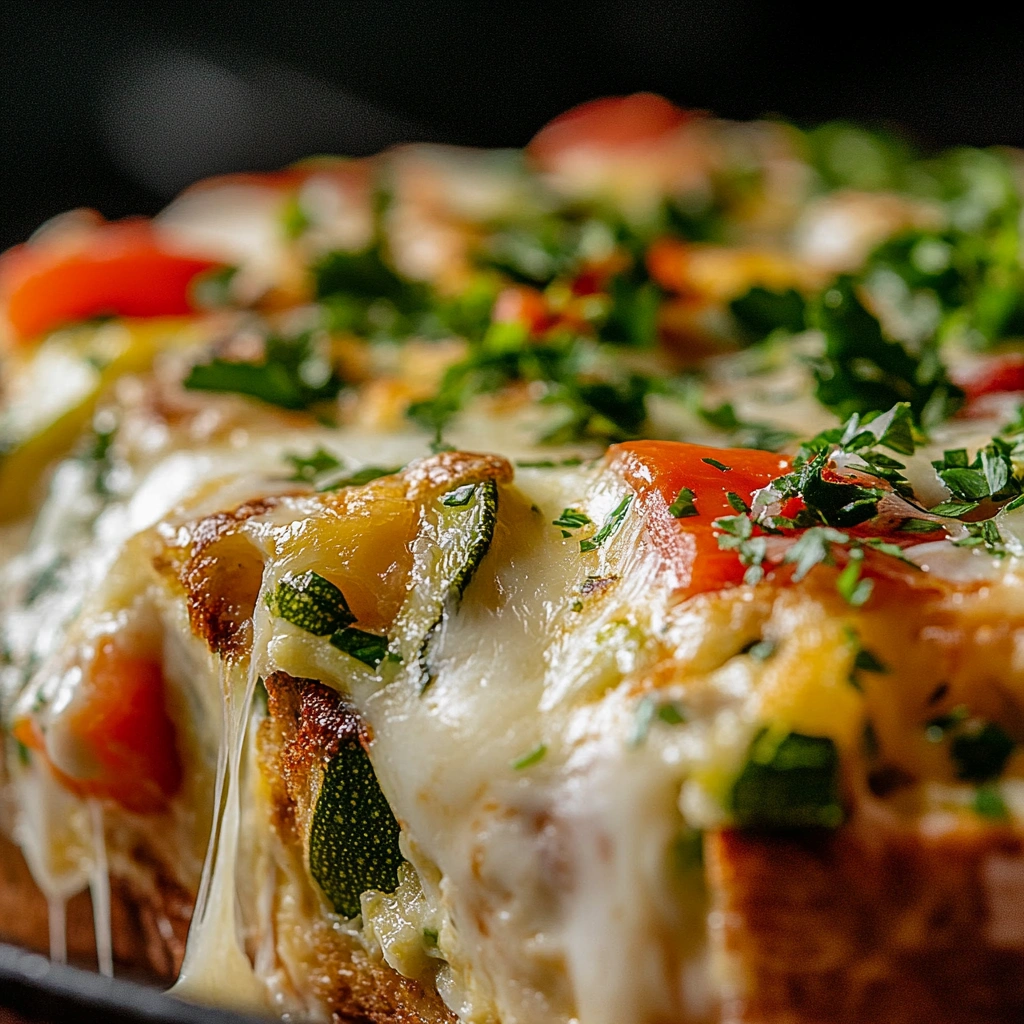
Frittata Variations by Cuisine or Diet
Frittatas are easy to adapt to different cuisines or dietary needs. Here are a few inspired variations:
Mediterranean Frittata
Spinach, sun-dried tomatoes, Kalamata olives, feta cheese, and oregano. Serve with a side of tzatziki or pita bread.
Keto/Low-Carb Frittata
Use heavy cream instead of milk, and focus on low-carb veggies like mushrooms, spinach, and zucchini. Add bacon and cheddar for a filling, protein-rich meal.
Vegetarian Frittata
Skip the meat and load up on colorful vegetables like bell peppers, cherry tomatoes, and broccoli. Add your favorite cheese and finish with fresh herbs.
Dairy-Free Frittata
Use unsweetened almond milk or coconut milk and skip the cheese. Add bold flavors like caramelized onions, smoked paprika, and spicy sausage.
Breakfast-for-Dinner Frittata
Combine breakfast favorites like hash browns, bacon, and cheddar. Serve with toast or fruit for a comforting evening meal.
Each variation keeps the core process the same, so once you master the technique, you can easily make frittatas part of your regular meal rotation.
How to Store and Reheat a Frittata
Frittatas store and reheat beautifully, making them ideal for meal prep or leftovers.
To store in the fridge:
Let the frittata cool completely, then cover and refrigerate in an airtight container for up to 4 days. You can also wrap individual slices for easy grab-and-go meals.
To freeze:
Cut into portions, wrap tightly in plastic wrap or foil, and store in a freezer-safe container for up to 2 months. Thaw overnight in the refrigerator before reheating.
Reheating tips:
-
In the oven: Reheat at 350°F (175°C) for 10–15 minutes, or until warmed through.
-
In the microwave: Heat individual slices on medium power for 1–2 minutes. Cover with a damp paper towel to keep it from drying out.
Avoid overheating, which can cause the eggs to become rubbery. Low and slow is best for maintaining texture.
Serving Suggestions
Frittatas are incredibly versatile when it comes to serving options. Enjoy them warm, room temperature, or chilled—perfect for any time of day.
Serve slices with a light salad for a quick lunch or pair with toast and fruit for a hearty breakfast. They’re excellent for brunch spreads, especially when cut into small squares as finger food.
For dinner, a frittata works well with roasted vegetables or crusty bread. Add a simple vinaigrette-dressed arugula salad on the side for a well-rounded meal. You can also tuck slices into sandwiches or wraps for an easy packed lunch.
Common Mistakes to Avoid
Even though frittatas are simple, a few common missteps can affect the final result:
-
Overcooking: This makes the eggs rubbery. Remove the frittata when it’s just set in the center.
-
Too many wet ingredients: Water-heavy vegetables like mushrooms or tomatoes should be pre-cooked and drained.
-
Improper egg-to-dairy ratio: Too much liquid leads to a loose, watery texture.
-
Underseasoning: Eggs need salt to bring out their flavor. Season well before cooking.
-
Skipping rest time: Letting the frittata cool for 5–10 minutes helps it firm up and makes slicing cleaner.
Avoid these mistakes for a perfect frittata every time.
Print
Easy Frittata Recipe (Choose Your Add-Ins)
Description
This easy, oven-baked frittata is the perfect recipe for busy mornings, weekend brunch, or a quick dinner. Made with a base of eggs, a splash of milk or cream, and your choice of add-ins like vegetables, cheese, and cooked meats, it’s endlessly customizable and comes together in just 30 minutes. Whether you’re cleaning out the fridge or feeding a crowd, this frittata delivers satisfying flavor and fluffy texture every time. Great hot, warm, or chilled!
Ingredients
- 8 large eggs
- ¼ cup milk or cream
- Salt & pepper, to taste
- 1 tbsp olive oil or butter
- 1 cup chopped vegetables (pre-cooked if needed)
- ½ cup shredded or crumbled cheese (optional)
Instructions
-
Preheat oven to 375°F (190°C).
-
In a bowl, whisk eggs, milk, salt, and pepper.
-
Heat oil in an oven-safe skillet. Sauté vegetables or other add-ins.
-
Pour egg mixture over sautéed ingredients. Cook 2–3 minutes on the stove.
-
Transfer skillet to oven. Bake 10–15 minutes or until eggs are set.
-
Let cool slightly, slice, and serve.
Serves: 4–6
Total Time: ~30 minutes
Notes
-
Customize Your Add-Ins: Use up to 1½ cups total of sautéed vegetables, cooked meats, and cheese. Avoid overloading the pan to ensure even cooking.
-
Dairy-Free Option: Substitute the milk with unsweetened almond or coconut milk and omit cheese, or use dairy-free cheese alternatives.
-
Storage Tips: Store leftovers in an airtight container in the refrigerator for up to 4 days. For longer storage, freeze individual slices for up to 2 months.
-
Reheating: Reheat in the oven at 350°F (175°C) for 10–15 minutes or in the microwave for 1–2 minutes, covered with a damp paper towel to retain moisture.
-
Make-Ahead Friendly: Prepare in advance and serve chilled or bring to room temperature before serving at brunch or picnics.


